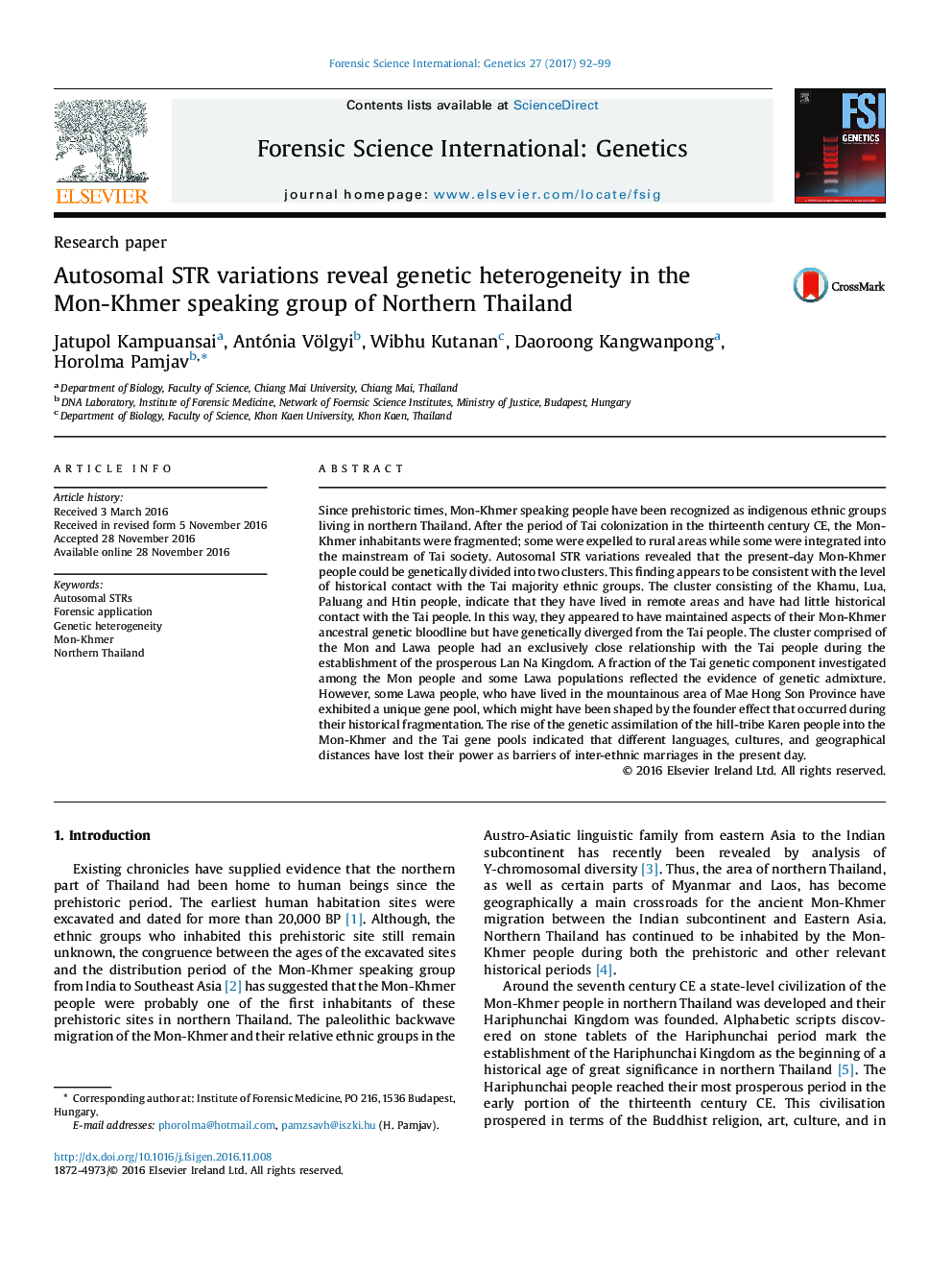| کد مقاله | کد نشریه | سال انتشار | مقاله انگلیسی | نسخه تمام متن |
|---|---|---|---|---|
| 6462914 | 1422151 | 2017 | 8 صفحه PDF | دانلود رایگان |

- 738 individuals of the ethnic groups of northern Thailand were genotyped by the PowerPlex ESI16 system.
- All statistical, forensic efficiency parameters were calculated.
- The allele frequency distributions observed in the Tai linguistic group are different from published northern Thai population.
- The Mon-Khmer prehistoric descendants could be divided into two clusters which appeared in consistency with the level of historical contact with the Tai majority ethnics.
Since prehistoric times, Mon-Khmer speaking people have been recognized as indigenous ethnic groups living in northern Thailand. After the period of Tai colonization in the thirteenth century CE, the Mon-Khmer inhabitants were fragmented; some were expelled to rural areas while some were integrated into the mainstream of Tai society. Autosomal STR variations revealed that the present-day Mon-Khmer people could be genetically divided into two clusters. This finding appears to be consistent with the level of historical contact with the Tai majority ethnic groups. The cluster consisting of the Khamu, Lua, Paluang and Htin people, indicate that they have lived in remote areas and have had little historical contact with the Tai people. In this way, they appeared to have maintained aspects of their Mon-Khmer ancestral genetic bloodline but have genetically diverged from the Tai people. The cluster comprised of the Mon and Lawa people had an exclusively close relationship with the Tai people during the establishment of the prosperous Lan Na Kingdom. A fraction of the Tai genetic component investigated among the Mon people and some Lawa populations reflected the evidence of genetic admixture. However, some Lawa people, who have lived in the mountainous area of Mae Hong Son Province have exhibited a unique gene pool, which might have been shaped by the founder effect that occurred during their historical fragmentation. The rise of the genetic assimilation of the hill-tribe Karen people into the Mon-Khmer and the Tai gene pools indicated that different languages, cultures, and geographical distances have lost their power as barriers of inter-ethnic marriages in the present day.
Journal: Forensic Science International: Genetics - Volume 27, March 2017, Pages 92-99